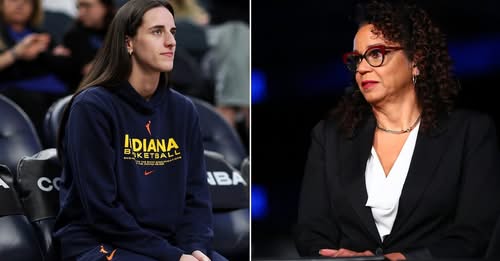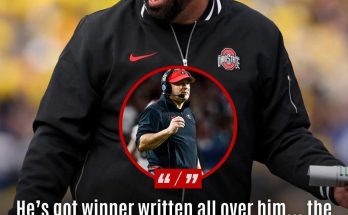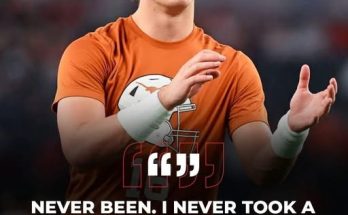Controversy has erupted in the world of women’s basketball after an ESPN analyst made a bold claim that the Indiana Fever perform better without their injured star rookie, Caitlin Clark. The statement sparked immediate backlash from fans, analysts, and even players, as statistics and game footage suggest the opposite—that the Fever struggle significantly in Clark’s absence. The debate highlights broader discussions about player value, team dynamics, and how narratives are shaped in sports media, especially around high-profile athletes like Clark, who has been a lightning rod for attention since entering the WNBA.
Caitlin Clark, the No. 1 overall pick in the 2024 WNBA Draft, has been a transformative figure for the Indiana Fever. Her electrifying playmaking, deep-range shooting, and ability to draw crowds have made her one of the most talked-about rookies in league history. However, her recent injury forced her to miss several games, and during that stretch, the Fever’s performance dipped noticeably. Yet, an ESPN analyst argued that the team looked more cohesive without her, suggesting that Clark’s ball-dominant style might disrupt the Fever’s offensive flow. This take was met with swift criticism, as the numbers tell a different story.
In the games Clark has played, the Fever’s offensive rating improves significantly, and their pace—a key component of their strategy—increases dramatically. Clark’s ability to push the ball in transition, create shots for herself and others, and space the floor with her three-point shooting opens up opportunities for her teammates. Without her, the Fever’s offense often stagnates, relying heavily on isolation plays and less efficient shot selection. The team’s win-loss record with and without Clark further underscores her importance—when she’s on the floor, they are far more competitive, even against top-tier opponents.
The backlash to the ESPN analyst’s comments wasn’t just about the stats. It also touched on a recurring theme in sports discourse: the tendency to downplay the impact of young, high-usage players, particularly when they are as polarizing as Clark. Since her college days at Iowa, Clark has been a magnet for both praise and criticism. Her flashy style, confidence, and willingness to take big shots have endeared her to millions, but they’ve also drawn skepticism from those who believe her game is too individualistic. This latest controversy feels like an extension of that ongoing debate—whether a player like Clark, who dominates possession and highlights, is truly beneficial to team success in the long run.
What makes this discussion even more charged is the broader context of the WNBA’s growth. Clark’s arrival has brought unprecedented attention to the league, with record ticket sales, jersey purchases, and TV ratings following her every move. Critics of the ESPN analyst’s take argue that diminishing Clark’s impact feels like an attempt to undermine her cultural significance, as if her popularity somehow detracts from her on-court value. On the other hand, supporters of the analyst’s perspective insist that it’s a valid basketball discussion—one that shouldn’t be dismissed just because Clark is a superstar.
The Fever’s coaching staff and players have also weighed in, albeit indirectly. Head coach Christie Sides has repeatedly emphasized Clark’s importance to the team’s system, noting that her ability to create offense under pressure is irreplaceable. Teammates like Aliyah Boston and Kelsey Mitchell have spoken about how Clark’s presence forces defenses to adjust, creating easier looks for everyone else. Even opponents have acknowledged that game-planning for the Fever is entirely different when Clark is on the floor. These insider perspectives further contradict the narrative that Indiana is better off without her.
Digging deeper into the statistics, the case for Clark’s indispensability becomes even clearer. With her on the court, the Fever’s assist rate jumps, their turnover percentage decreases, and their effective field goal percentage improves. These are all indicators of a more efficient, fluid offense. Defensively, Clark isn’t a lockdown defender, but her effort and basketball IQ allow her to be serviceable, and her offensive contributions far outweigh any defensive liabilities. The idea that the Fever are somehow more balanced without her doesn’t hold up under scrutiny.
So why did the ESPN analyst’s take gain any traction at all? Part of it may stem from a natural inclination to play devil’s advocate in sports media—controversial opinions drive engagement, even if they aren’t rooted in fact. There’s also the age-old bias toward veterans over rookies; some believe that a young player, no matter how talented, can’t possibly be the best thing for a team’s success. And then there’s the simple reality that Clark’s style is unapologetically bold, which rubs some traditionalists the wrong way. If she were a more conservative player, perhaps the narrative would be different.
The controversy also raises questions about how women’s basketball is analyzed compared to the men’s game. Would a male rookie with Clark’s stats and impact be subjected to the same skepticism? Historically, young male stars are often given the benefit of the doubt, with analysts focusing on their potential rather than nitpicking their flaws. The scrutiny Clark faces feels disproportionate, and it’s hard to ignore the gendered undertones in some of the criticism. Women athletes, especially those who are assertive and dominant, are often held to a different standard than their male counterparts.
At the heart of this debate is a fundamental question: What does “better” even mean in this context? If the argument is that the Fever play more conventionally without Clark, that might be true—but conventional doesn’t necessarily mean effective. Clark’s game is unconventional in the best way possible; she stretches defenses, creates chaos, and produces points in ways most players can’t. The Fever knew what they were getting when they drafted her, and her style is a feature, not a bug. To suggest that the team is better without her is to misunderstand what makes her special.
As Clark returns from injury, the Fever will have a chance to silence the doubters once and for all. If she leads them to a playoff push or elevates the play of her teammates in meaningful ways, the narrative will shift. But it’s telling that even after all she’s accomplished—from breaking NCAA records to revitalizing a struggling franchise—there are still those eager to downplay her impact. Perhaps that’s the price of being a generational talent: no matter what you do, there will always be someone ready to say it’s not enough.
In the end, the numbers don’t lie. The Indiana Fever are a better team with Caitlin Clark on the floor, and any suggestion otherwise ignores the evidence. The controversy says more about sports media’s obsession with hot takes than it does about Clark’s game. As she continues her career, one thing is certain: she’ll keep proving her worth, one highlight-reel play at a time. And the Fever, along with their fans, will be grateful to have her.



